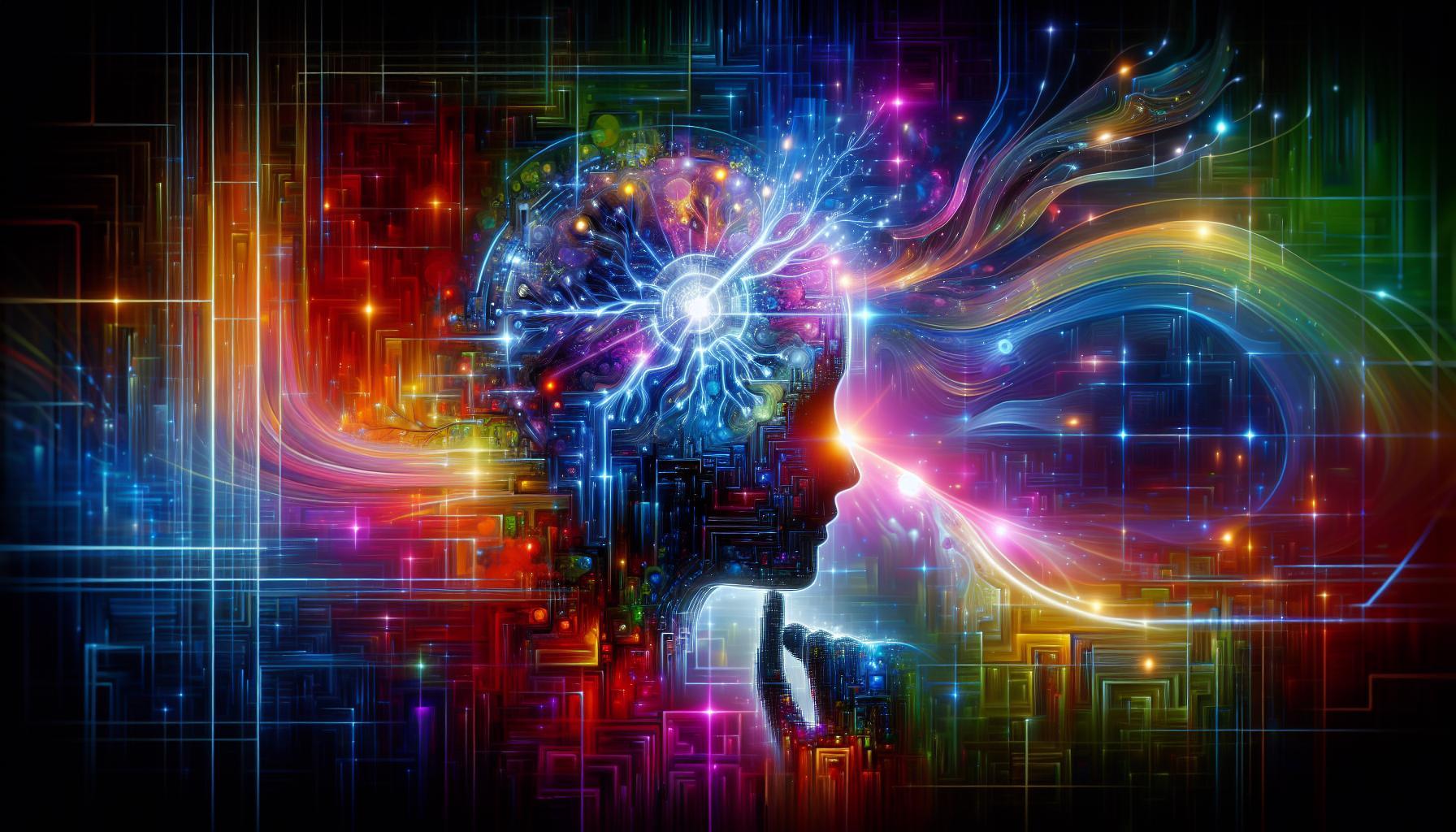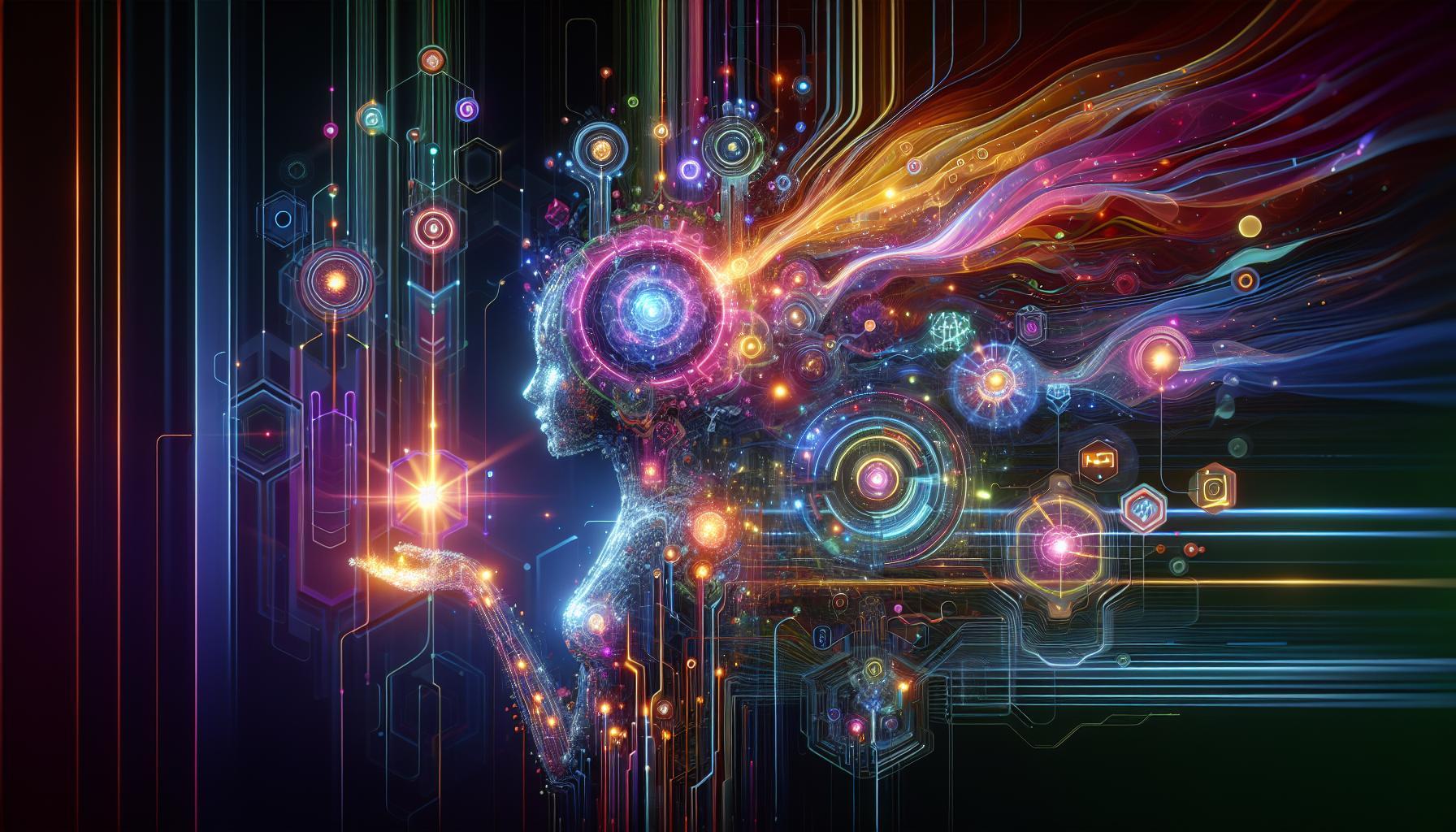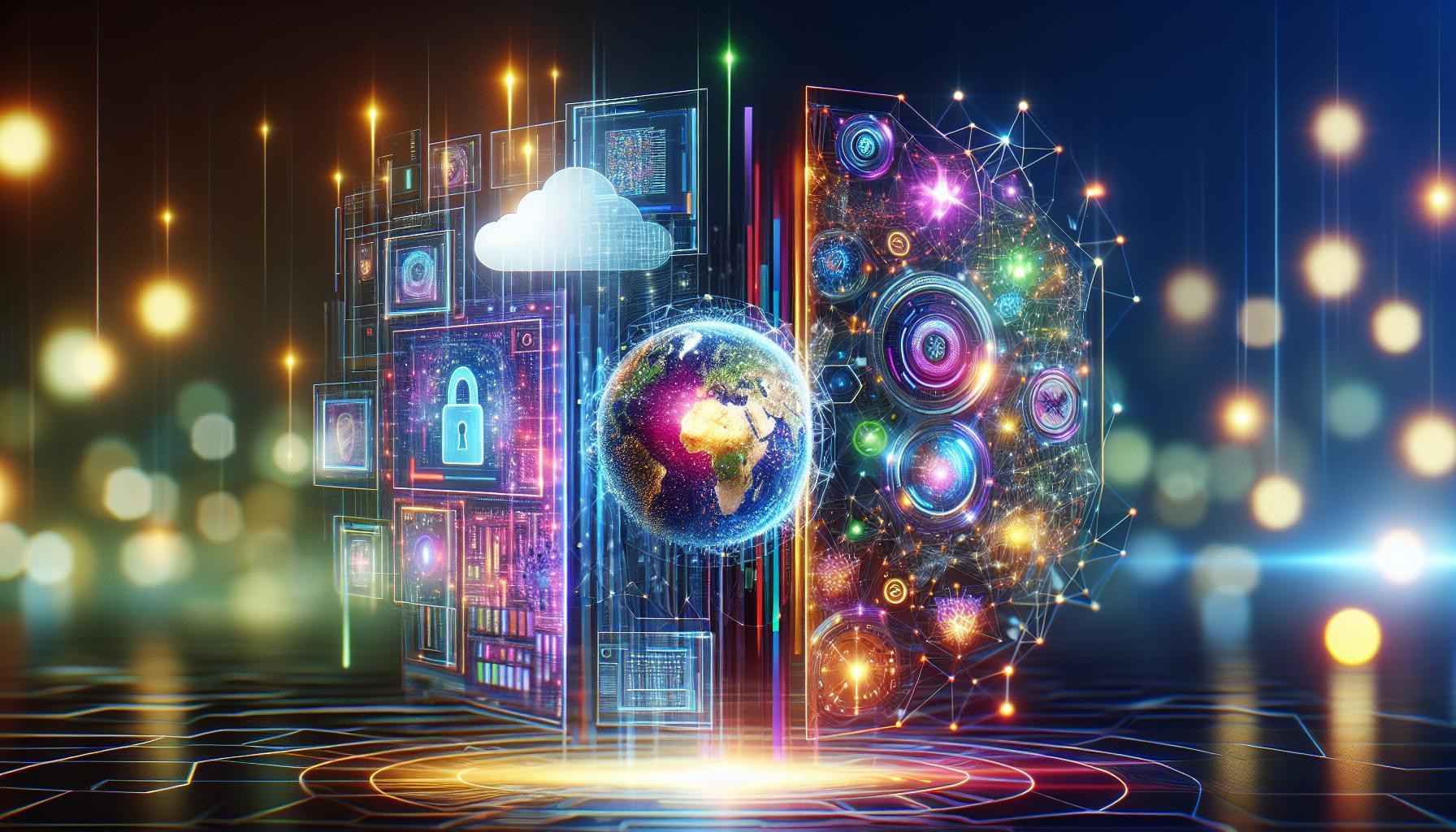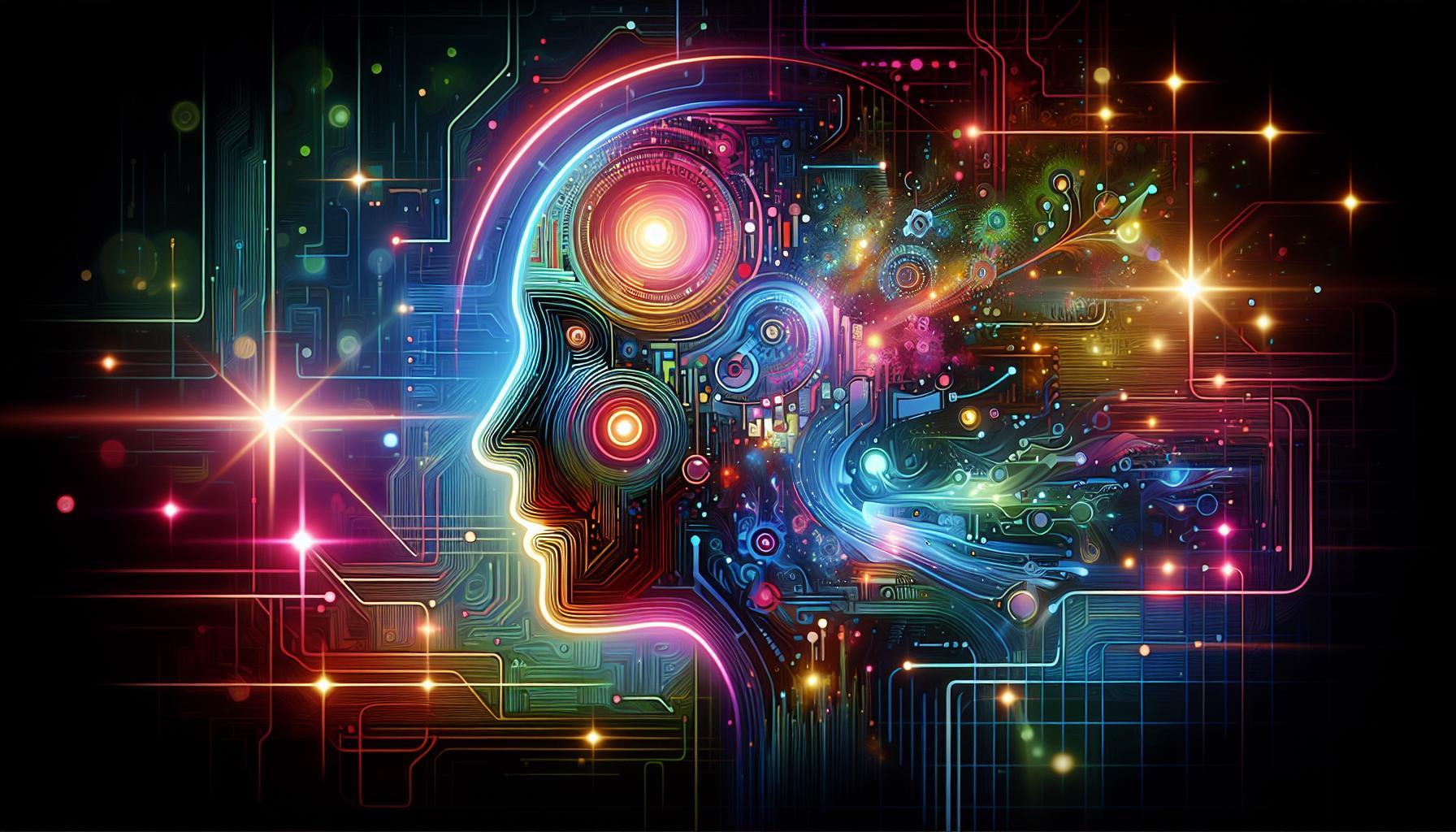As AI-generated art becomes increasingly popular, questions arise about its impact on original creators. At the heart of the debate is whether platforms like Stable Diffusion effectively appropriate existing artworks, sparking broader discussions on ethics and copyright in the digital age. Understanding these implications is crucial as we navigate the future of creative expression.
Understanding Stable Diffusion: How It Works and Its Ethical Implications
AI-driven tools like Stable Diffusion are revolutionizing the art world by making it incredibly accessible for anyone to create images through simple text prompts. However, this technological advancement brings forth complex questions regarding ethics and copyright. As users can generate distinctive visuals with minimal technical know-how, it raises the pressing question: does this form of creativity respect the intellectual property of original artists? The challenge lies in balancing innovation with the rights of creators whose works may serve as inspiration for AI models.
How Stable Diffusion Functions
Stable Diffusion operates as a text-to-image generator that utilizes machine learning algorithms trained on vast datasets. This training includes both artworks and photographs, which allow the model to learn various styles and elements. When a user inputs a prompt, the model analyzes the text, predicts appropriate visual representations, and generates an image that reflects the user’s request. This process, though fascinating, is rife with ethical implications concerning originality and ownership.
Ethical Concerns and Copyright Issues
The ethical implications of using Stable Diffusion extend not only to copyright infringement but also to biases inherent in the training data. As noted by experts, the ability for anyone to create potentially harmful or inappropriate images at scale poses significant risks [[3]]. Furthermore, because these models do not filter content, they can inadvertently perpetuate stereotypes or produce insensitive representations [[2]].
In navigating these issues, stakeholders in the art community can consider developing guidelines that respect artist rights while encouraging responsible AI use. For instance, establishing a framework for providing credit to artists whose styles are emulated by AI can foster a more ethical relationship between human creativity and machine learning. Engaging in discussions about licensing, fair use, and the modification of existing artworks may also pave the way for a solution that recognizes the contributions of both AI programmers and traditional artists.
As the world grapples with whether Stable Diffusion and similar models “steal art,” proactive measures and collaborative efforts are essential. By advocating for transparency in data usage and exploring new legal frameworks, the creative industry can harness the power of AI while upholding the integrity of artistic expression.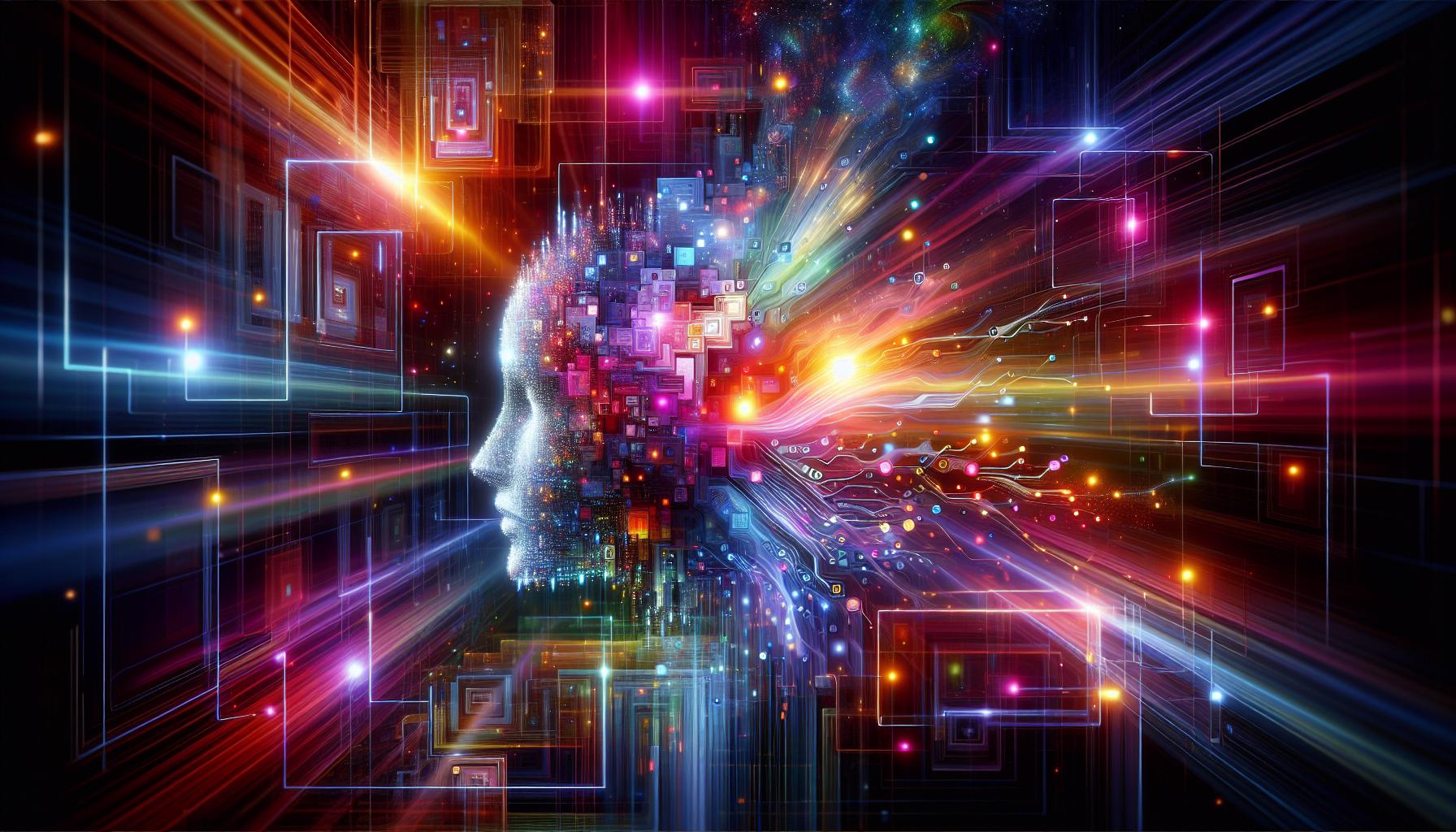
The Fine Line Between Inspiration and Imitation in AI-generated Art
The rapid advancement of AI technologies has sparked a profound conversation surrounding the nature of creativity in art. As AI models like Stable Diffusion generate stunning visuals, the question arises: where does inspiration end, and imitation begin? This dilemma is particularly relevant in discussions about copyright and ethics, as more artists and collectors question whether AI-generated artworks respect the original works upon which they draw. In an age when every brushstroke can be traced back to an extensive database of human-created art, understanding the nuances between genuine inspiration and mere duplication becomes essential.
One of the core challenges lies in the fact that AI systems often learn from vast datasets containing thousands, if not millions, of existing artworks. This method of learning can blur the lines of originality, raising ethical concerns about whether the AI is merely replicating styles or creatively interpreting ideas. The debate hinges on the concept of transformative use, which is a legal doctrine that can afford protection to derivative works, as long as they add new expression or meaning. However, when does an AI artwork cross the boundary from being inspired by a source to stealing from it? Below are factors to consider:
- Intent: What is the purpose of the AI-generated art? Is it to innovate and push artistic boundaries or merely to clone existing styles?
- Complexity of output: Does the AI produce works that exhibit a significant transformation from the source material, or do they closely mirror specific traits?
- Artist’s involvement: How much direction and input did a human artist provide during the AI’s creative process?
The ethical landscape surrounding AI-generated art continues to evolve, with various stakeholders advocating for clearer guidelines. Artists need to be proactive, ensuring they understand the legal implications of using AI tools to avoid potential infringement and to preserve their creative integrity. Additionally, public discourse on the role of AI in art should not merely focus on what is legally permissible but also consider what is morally acceptable. Collectively, the industry should strive for a balanced approach that respects both technological innovation and the rights of original creators.
To effectively navigate this complex debate, artists, collectors, and technologists must engage in ongoing conversations about the implications of AI’s role in art. Taking small steps towards transparency and ethical use of AI could foster an ecosystem where creativity thrives without infringing upon the contributions of human artists. By examining these challenges systematically, as highlighted in discussions around ‘Does Stable Diffusion Steal Art? Examining AI Ethics and Copyright’, we can better understand the responsibilities that accompany such powerful tools.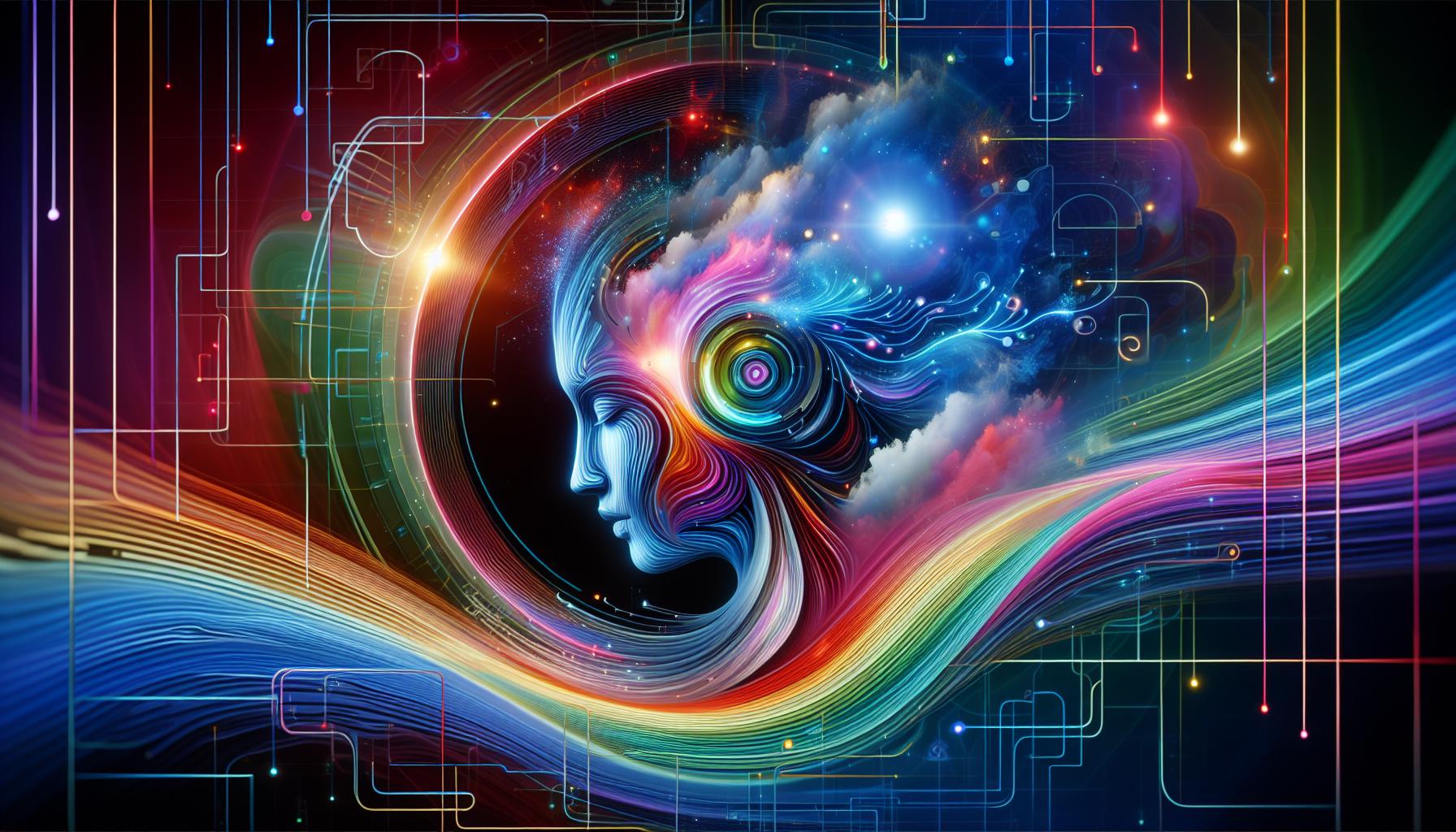
Copyright Challenges: What Artists Need to Know About AI Tools
As the digital landscape continues to evolve, artists are increasingly confronting the realities of how AI tools like Stable Diffusion interact with their work. Often touted for their innovative capabilities, these technologies raise significant ethical and copyright concerns that every creator should be aware of. When exploring the intersection of AI and creativity, understanding copyright implications is crucial. It’s not just about production; it’s about ownership, credit, and the potential for infringement.
The introduction of AI-generated content has blurred the lines of originality. Artists must discern the extent to which their work might be utilized by AI algorithms. For instance, AI models such as Stable Diffusion are trained on vast datasets that may include copyrighted material. This raises the unsettling question: do these tools inadvertently ‘steal’ art? In truth, copyright challenges in this context stem from the AI’s reliance on existing works to create new images, which can lead to complex legal disputes. As such, artists should actively monitor how their creations are used and remain informed about their rights.
Understanding Your Rights
To navigate these challenges effectively, artists should familiarize themselves with the following key points:
- Copyright Ownership: Always ensure that your original works are properly registered. Copyright protection provides legal recourse if your art is used without permission.
- Licensing Agreements: Consider implementing clear licensing agreements for any collaborative or commissioned work to specify the right to use AI tools.
- Educate Yourself: Stay informed about evolving laws regarding AI-generated content. Changes may occur as legal precedents are established.
- Avoid Pitfalls: Be cautious when using AI tools. Being too reliant on these technologies without understanding their sourcing could lead to unintended copyright violations.
The active participation of artists in these dialogues is essential. Engaging with communities focused on AI ethics can provide support and facilitate the sharing of experiences related to copyright issues. Ultimately, the question, “Does Stable Diffusion steal art?” is far from straightforward, demanding careful consideration and proactive measures to safeguard one’s creative output.
Practical Steps for Artists
To protect yourself in this rapidly advancing landscape, consider the following:
| Action Step | Description |
|---|---|
| Research AI Tools | Understand how various AI applications function, particularly concerning their data sources. |
| Document Your Work | Keep detailed records of your creative processes and initial drafts to establish originality. |
| Engage Legal Advice | Consult with an intellectual property attorney to clarify your rights and potential risks. |
By taking these proactive measures, artists can better safeguard their work against the complexities of AI-generated content, fostering a more informed and ethical creative environment.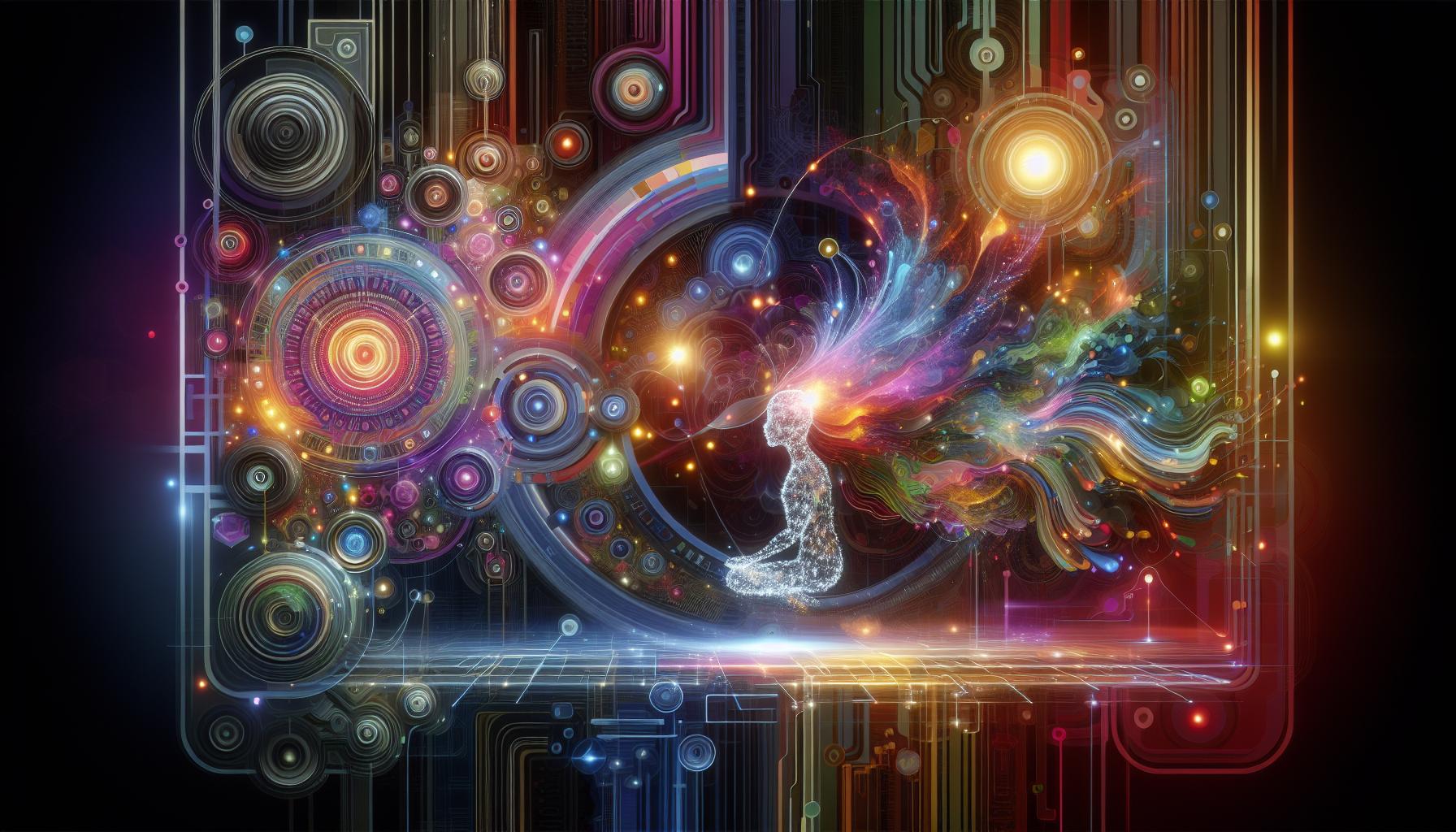
Real-World Cases: When AI Art Meets Copyright Controversies
The intersection of artificial intelligence and copyright law has sparked intense debates and real-world legal confrontations in recent years, making the question “Does Stable Diffusion Steal Art?” increasingly relevant. As AI technologies, particularly image generators like Stable Diffusion, have grown in capability and popularity, they have also drawn criticism from artists who allege that these systems incorporate and use their works without permission. This complex dynamic raises fundamental questions about creativity, ownership, and fair use in an age where machines can produce artworks that rival human efforts.
One notable example of such tension emerged in 2023 when a group of visual artists filed a class action lawsuit against several AI companies, including Stability AI, claiming that their image-generation products directly infringe upon the artists’ copyright. The plaintiffs argued that these companies leveraged a vast array of copyrighted materials to train their AI models, effectively replicating and exploiting the unique artistic styles of individual creators by design. As the case proceeded, it became evident that the legal system is grappling with how to interpret existing copyright laws in a novel context, culminating in an August 2024 district court ruling that allowed the artists to pursue their claims while leaving ambiguous the status of AI training under the Fair Use doctrine [[1]](https://www.brookings.edu/articles/ai-and-the-visual-arts-the-case-for-copyright-protection/).
Most intriguing, however, is the contradiction between the legal treatment of AI-generated works and their commercial reception. Despite the fact that courts have ruled AI-generated art lacks copyright protection due to the absence of human authorship, the art market has demonstrated a contrary trend. Artwork produced by AI, such as “Machine Hallucinations,” has fetched staggering auction prices – over $270,000 at Christie’s, showcasing a growing demand for these non-human creations. This disparity poses further ethical dilemmas surrounding ownership, value, and what it means to be an artist in a world where machines can mimic human creativity [[1]](https://www.brookings.edu/articles/ai-and-the-visual-arts-the-case-for-copyright-protection/).
As the U.S. Copyright Office continues to explore these issues – having initiated a comprehensive examination of AI’s impact on copyright law – both artists and AI developers must navigate this uncertain terrain. Upcoming reports from the Copyright Office promise to address critical questions regarding the copyrightability of AI-generated works and the legality of using copyrighted materials for AI training, setting the stage for pivotal changes in how we conceive authorship and creativity in the digital age [[2]](https://www.copyright.gov/ai/). In the meantime, artists are encouraged to stay informed about their rights and potential legal avenues available for protecting their creative outputs in a rapidly evolving landscape.
Encouraging Creativity: How Artists Can Collaborate with AI Responsibly
In an era where technology increasingly influences creativity, the dialogue surrounding the ethical implications of AI, particularly in art, has become paramount. Artists equipped with generative AI tools can expand their creative horizons, but the challenge lies in engaging with these technologies without infringing on artistic integrity or copyright. As discussions arise around whether systems like Stable Diffusion “steal” art, it’s crucial for artists to navigate this landscape with a sense of responsibility and respect for original creations.
Understanding AI’s Role in Creative Processes
Collaborating with AI can enhance artistic expression if approached correctly. By leveraging tools such as Stable Diffusion, artists can experiment with new forms, styles, and concepts that were previously inaccessible. It’s essential, however, for artists to ensure that the input data used by these AI systems does not violate copyright laws. Here are some recommendations for responsible collaboration:
- Curate Input Carefully: Select datasets that are copyright-free or under licenses that allow for transformation.
- Engage with Original Art: Use original artwork as inspiration rather than as direct input, ensuring that the creative output is distinct from any copyrighted styles.
- Attribution and Transparency: Whenever feasible, credit sources of inspiration or datasets used, maintaining transparency in the creative process.
Building Partnerships with AI
Artists can benefit from developing a creative partnership with AI rather than viewing it merely as a tool. This partnership can manifest through iterative processes where artists refine AI-generated outputs to achieve their unique vision. For instance, an artist might input a concept into an AI model like Stable Diffusion and then hand-paint over the generated image to infuse personal style and originality.
Real-world examples illustrate this synergetic approach: designers blending traditional techniques with AI-generated patterns or musicians using AI to compose background scores that they later modify and personalize. This method fosters a creative dialogue that respects the boundaries of copyright while embracing innovation.
Continuous Learning and Adaptation
To navigate the challenges of AI in the artistic community, artists should engage in lifelong learning about the ethical implications of AI usage. Staying informed about developments in copyright law, digital rights, and AI advancements will equip artists to innovate responsibly.
Artists are encouraged to participate in workshops and forums discussing AI ethics in art. Such platforms not only provide vital education but also foster community and collaboration among artists grappling with similar issues. The conversation around “Does Stable Diffusion Steal Art? Examining AI Ethics and Copyright” can thus evolve from one of apprehension to exploration, focusing on how art can flourish in conjunction with intelligent technologies.
In conclusion, the intersection of AI and art offers unprecedented opportunities for creative expression, provided that artists approach it with responsibility and ethical considerations at the forefront. By understanding the technologies, curating input wisely, and fostering partnerships with AI, artists can ensure their work remains innovative and legally sound while navigating the complex landscape of digital creativity.
The Role of Transparency in AI Development and Artistic Integrity
In the evolving landscape of artificial intelligence and its application in creative fields, the call for transparency has never been more critical. As technology advances, tools like Stable Diffusion raise pressing questions about authorship, originality, and the ethical implications of using AI-generated content. The intersection of AI and artistic integrity hinges on clear communication about how these tools are employed, particularly regarding the sources from which they learn and the data on which they are trained. Acknowledging these aspects fosters a culture of responsibility and trust within the artistic community.
Why Transparency Matters
Transparency not only safeguards the integrity of artists’ work but also nurtures a space where their creativity can flourish alongside technological innovation. Here are several key reasons why transparency is essential in AI development related to artistic practices:
- Preservation of Originality: Artists deserve to know if their styles or works are being unintentionally mimicked or altered by AI tools. Clear disclosure about training datasets can help mitigate concerns regarding the unauthorized use of artistic styles.
- Building Trust: As consumers become more aware of AI’s role in art creation, they seek assurance that the works they engage with abide by ethical standards. Transparency can build consumer trust, establishing a clearer divide between human-crafted and AI-assisted art.
- Encouraging Ethical Practices: By promoting honest discourse about how AI tools operate, artists and developers can collaboratively shape a code of ethics that respects both technological capabilities and human creativity.
Real-World Examples of Transparency in AI
Numerous initiatives highlight the importance of transparency in AI development within the artistic sector. For instance, the Society for Artistic Integrity champions transparency as a fundamental principle for artists using AI, advocating for clear communication about the origin and nature of their productions [[2]]. This kind of advocacy not only helps maintain high standards of artistic integrity but also encourages educational institutions to incorporate discussions on AI ethics into their curriculums.
Furthermore, exhibiting AI-generated works with labeling that identifies their creation methods can stimulate discussions about intellectual property rights and ownership. As the conversation surrounding “Does Stable Diffusion Steal Art? Examining AI Ethics and Copyright” continues to unfold, it becomes increasingly important for artists and AI developers to work together, ensuring the future of creativity remains vibrant and respectful of all contributors’ rights.
Practical Steps for Artists and Developers
For those involved in or affected by the interplay between AI and art, taking proactive steps toward transparency can significantly influence perception:
- Disclose AI Tool Usage: Artists should specify the AI tools they use and the nature of their involvement in the creative process.
- Engage in Community Dialogues: Join discussions about ethical practices and share experiences regarding AI’s impact on art.
- Attribute Sources Carefully: When using AI that relies on datasets drawn from existing art, it’s vital to credit original creators where possible.
Incorporating these practices will not only enhance the authenticity of artistic endeavors but also pave the way for a more equitable and transparent creative ecosystem as we navigate the complexities of AI in the art world.
Navigating the Future: Legal Perspectives on AI and Creative Ownership
As artificial intelligence becomes increasingly intertwined with creative processes, the legal landscape struggles to keep pace. The advent of AI tools like Stable Diffusion has ignited a fervent debate about intellectual property rights in the digital age. Questions arise over whether these models infringe on copyright by utilizing existing artworks for training purposes, or if they represent a legitimate evolution in creative ownership. Understanding the implications of these developments is crucial for artists, developers, and legal professionals alike.
In recent legal battles, such as those involving Stability AI Ltd., courts have begun to clarify the boundaries of copyright law as it pertains to AI-generated works. Plaintiffs assert that their copyrighted materials were included in training datasets without permission, constituting infringement. Conversely, developers argue their use of such works falls under the doctrine of fair use-transformative use that contributes to the creation of new, original outputs. This tension encapsulates the core of the current legal discourse surrounding AI and creativity [[2](https://www.eff.org/deeplinks/2025/02/copyright-and-ai-cases-and-consequences)].
To further navigate these shifting sands, artists and creators should consider a multifaceted approach:
- Understand Copyright Basics: Familiarize yourself with copyright principles and how they apply to both traditional and digital artworks.
- Engage with Legal Experts: Consult with intellectual property attorneys to better grasp the implications of using AI in your creative process.
- Adopt Best Practices: When using AI-generated content, ensure that your original contributions are substantial enough to claim ownership.
- Stay Informed: Keep abreast of ongoing litigation and legislative changes in intellectual property law as they pertain to AI.
The evolution of AI technologies poses profound questions about authorship and ownership. The challenge lies not only in the technology itself but in how the legal system adapts to these emerging realities. Each legal precedent sets a new standard that may redefine what it means to create art in an age dominated by AI. Understanding these nuances is vital for anyone engaged in creative work and highlights the importance of advocating for clear, fair, and forward-thinking legal frameworks that protect both creators and innovators.
FAQ
Does Stable Diffusion Steal Art? Examining AI Ethics and Copyright?
No, Stable Diffusion does not directly steal art, but it raises significant ethical concerns. The software generates images based on learned patterns from a vast dataset, which may include copyrighted works. This process can blur the lines of copyright ownership and originality.
Stable Diffusion uses machine learning to create images by analyzing existing art, which means it sometimes produces images resembling real artists’ styles. This has led to debates on ethical art creation and copyright issues. Lawsuits against AI projects highlight the complexities of ownership and rights in this space.
For detailed insights on copyright challenges in AI, check our article on AI and copyright issues.
How does Stable Diffusion generate images?
Stable Diffusion generates images by interpreting text prompts and creating visuals based on extensive training data. It employs a neural network that has learned from diverse art styles.
This process involves encoding the text prompt into a format the model can understand, then using algorithms to produce corresponding images. It essentially acts as a virtual artist, synthesizing new artwork from millions of existing images and styles.
What are the ethical implications of using Stable Diffusion?
The ethical implications of using Stable Diffusion are profound, focusing on art theft, copyright, and originality. Critics argue that AI-generated art often mimics existing creators without giving proper credit.
Artists express concerns about losing recognition and income due to AI systems replicating their styles without consent. These issues compel society to rethink copyright laws concerning digital creations in the age of AI.
Can I use images generated by Stable Diffusion commercially?
Yes, you can use images generated by Stable Diffusion commercially, but you should be cautious about potential copyright issues. Always check the specific terms of the model you are using.
Some AI tools allow commercial use, but it’s crucial to understand the licensing agreements. You might still face challenges if the images closely resemble copyrighted works, so always consider consulting with a copyright lawyer to avoid legal issues.
Why does Stable Diffusion face copyright lawsuits?
Stable Diffusion faces copyright lawsuits due to its data training methods, which involve using images from various sources, including potentially protected works. This raises questions about intellectual property rights.
Such lawsuits aim to clarify whether training on copyrighted materials constitutes fair use. The outcomes could redefine how AI models are developed and what limitations exist for creators venturing into AI-generated art.
What should artists know about AI-generated art tools?
Artists should understand the benefits and risks of using AI-generated art tools like Stable Diffusion. These tools can enhance creativity but also pose challenges regarding originality and copyright.
By learning to navigate these challenges, artists can utilize AI as a powerful tool in their workflow instead of fearing it as a competitor. Staying informed about legal and ethical expectations can empower artists to innovate responsibly.
What is the future of AI in art creation?
The future of AI in art creation is likely to see growth in collaborative efforts where artists work alongside AI, rather than solely relying on it. This partnership can lead to more unique and varied expressions.
As technology evolves, we can expect more refined tools and clearer legal frameworks surrounding AI-generated art. The integration of ethical guidelines will become increasingly important to protect artists’ rights while fostering innovation.
Final Thoughts
As we have explored, the intersection of AI-generated art and copyright is a complex and evolving issue, especially concerning tools like Stable Diffusion. These systems, which generate images based on user prompts, raise significant ethical questions about originality and ownership, given their ability to mimic distinct artistic styles and generate content at scale. While many creators worry about their work being appropriated without permission, advocates for AI argue that these tools democratize art creation, making it accessible to all.
Understanding the implications of these technologies is crucial. As we delve deeper into the lifecycles of AI systems and their potential for misuse, it’s important to consider both the benefits and the challenges they present. Exploring the nuances of ethical frameworks and legal standards surrounding AI art can empower users to navigate this landscape responsibly.
We encourage you to engage with these topics further. Dive into the complexities of AI ethics, consider how these technologies might shape the future of creativity, and think about your role in this evolving conversation. By staying informed and actively discussing these issues, you can contribute to a more thoughtful and equitable approach to art in the age of AI.

